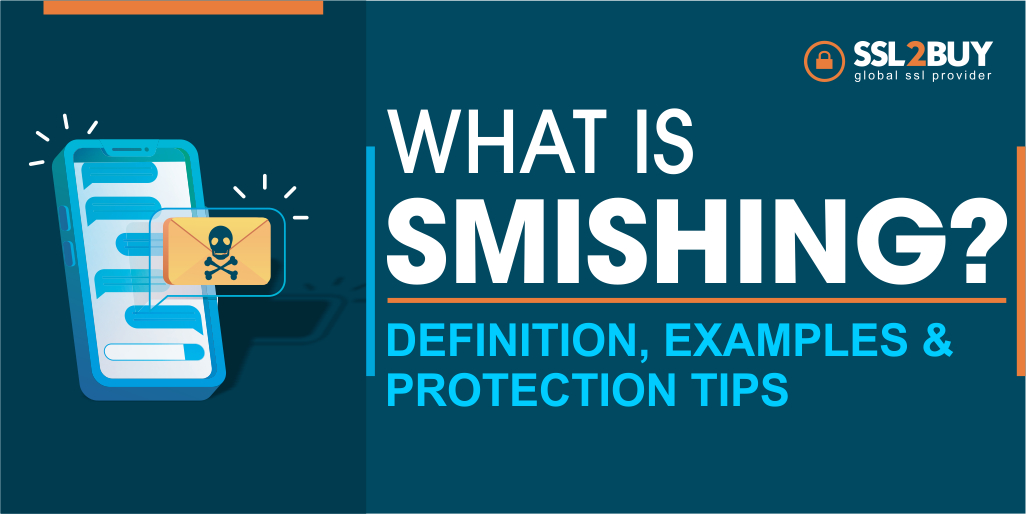Diving into the Depths: Understanding Smishing
Smiley, a type of phishing, uses SMS or text messages as a primary medium for fraud, exploiting trust to manipulate victims into providing sensitive information or engaging in malicious activities.
Target Selection: Casting the Net
Just as a skilled angler chooses the most promising fishing spot, so the smiles choose their targets carefully. Whether through random selection or data obtained from illicit sources such as the dark web, attackers identify individuals ripe for exploitation.
Crafting the Message: Weaving the Web of Deception
With their goals in mind, smiles create clever messages designed to convey specific emotions or reactions. Whether expressing urgency, fear, or curiosity, these messages prompt recipients to take action, often clicking on malicious links or revealing confidential details.
Message Delivery: Sending the Trap
Once the bait is set, the smilies send out their deceptive messages, casting a wide net across a sea of unsuspecting phones. With each text sent, the trap is sprung, and victims find themselves trapped in a web of deception.
Evasion Tactics: Playing Hide and Seek
To avoid detection and continue their nefarious operations, vandals employ a variety of stealth tactics. From constantly changing tactics and using different phone numbers to using sophisticated techniques to hide their identity, these cybercriminals operate in the shadows, constantly adapting to stay one step ahead.
Exploring the Landscape: Common Types of Smishing Attacks
Smishing manifests in various forms, each tailored to exploit specific vulnerabilities and capitalize on prevailing trends. Here are some common types of smishing attacks:
- Account Verification Scams: Pretending to be legitimate organizations, attackers lure victims into verifying their account details, leading to identity theft or unauthorized access.
- Prize or Lottery Scams: Promising lucrative rewards, scammers trick individuals into divulging personal information or making payments to claim nonexistent prizes.
- Financial Services Scams: By impersonating financial institutions, fraudsters attempt to extract banking credentials or initiate unauthorized transactions under the guise of legitimate communication.
- COVID-19 Scams: Exploiting the fear and uncertainty surrounding the pandemic, scammers peddle fake remedies, solicit donations for bogus charities, or disseminate false information to manipulate unsuspecting victims.
Fortifying Your Defenses: Best Practices to Combat Smishing
Protecting yourself against smishing requires vigilance and adherence to best practices. Here’s a comprehensive guide to fortifying your defenses:
Do not respond to suspicious texts. Exercise caution and refrain from engaging with unsolicited or suspicious messages.
Verify the source of the message. Scrutinize the sender’s identity and verify the legitimacy of the message before taking any action.
Avoid clicking links in suspicious texts. Exercise restraint and refrain from clicking on links embedded in dubious messages, as they may lead to malicious websites or initiate harmful downloads.
Keep your device updated. Regularly update your device’s operating system and applications to patch vulnerabilities and bolster security measures.
Use multi-factor authentication: Enable multi-factor authentication wherever possible to add an extra layer of security to your accounts.
Install anti-malware software. Arm your devices with robust anti-malware solutions to detect and thwart malicious attacks effectively.
Use a VPN: Safeguard your online activities and encrypt your internet connection by using a reputable virtual private network (VPN).
Perform a web search to verify the message’s legitimacy. When in doubt, conduct a web search to validate the authenticity of the message or claims made therein.
Report smishing to law enforcement: Be proactive and report instances of smishing to law enforcement agencies to aid in combating cybercrime.
Educate yourself and others about smishing tactics. Spread awareness and empower others by educating them about the dangers of smishing and how to recognize and avoid falling victim to such attacks.
By incorporating these best practices into your digital habits, you can significantly reduce your risk of becoming a victim of phishing attacks and keep your personal information and financial assets safe from malicious actors.
Unraveling the Mystery: FAQs About Smishing
How prevalent is smishing in today’s digital landscape?
Smishing has emerged as a pervasive threat in today’s interconnected world, with cybercriminals increasingly leveraging text messages to perpetrate fraudulent schemes and exploit unsuspecting individuals.
What are some red flags to watch out for when sending messages?
Common red flags in smishing messages include unsolicited communication, requests for sensitive information, grammatical errors or inconsistencies, and urgent calls to action designed to induce panic or urgency.
Can smishing messages contain malware or viruses?
Yes, smishing messages may contain links to malicious websites or downloads harboring malware or viruses designed to compromise the security of the recipient’s device and steal sensitive information.
How can individuals differentiate between legitimate and fraudulent text messages?
Individuals should be cautious when comparing legitimate and fraudulent text messages, verifying the sender’s identity, scrutinizing content for inconsistencies, and avoiding hasty actions without due diligence.
What should I do if I suspect I’ve received a smishing message?
If you suspect you’ve received a smishing message, refrain from interacting with the message or its contents, report it to the appropriate authorities or your mobile service provider, and delete the message from your device immediately.
How can businesses protect their customers from smishing attacks?
Businesses can protect their customers from smishing attacks by implementing robust security measures, educating customers about smishing risks, providing resources for reporting suspicious messages, and leveraging technology solutions to detect and mitigate fraudulent activity.
In Conclusion: Safeguarding Against Smishing
In an age full of digital threats, awareness and vigilance are critical to protecting against smashing and other cybercrimes. Staying informed, adopting best practices, and being vigilant against fraudulent tactics can help individuals and businesses strengthen their defenses and reduce the risk of falling victim to phishing attacks.

